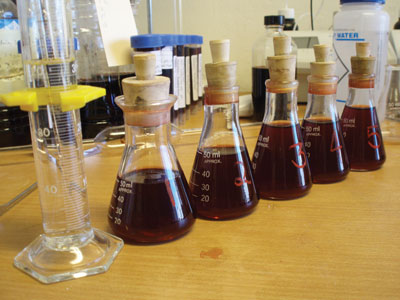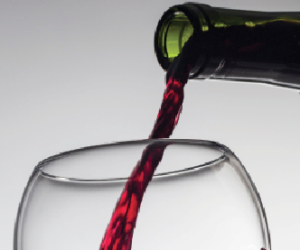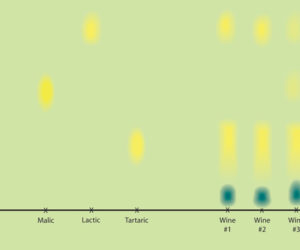Many winemakers and wine drinkers can get stuck in the mentality that wine is only made from Vitis vinifera grapes, and any other additions or deviations from this platform is a clear step down. For many, wines made from Vitis vinifera grapes and its many cultivars (such as Merlot and Chardonnay) have become the default definition of wine. But that doesn’t mean hobby winemakers should abide by this definition since wine can be any alcoholic beverage made from plant-based juice. I wanted to take the time to hopefully plant some seeds for winemakers that are stuck in this mindset.
Non-vinifera grapes
Folks who live in traditional wine grape-growing regions such as California, New York, Oregon, Washington, and other places where vinifera grapes can thrive, often put blinders on when it comes to what wine should be. But there are many hybrid cultivars (and non-vinifera varietals) that are growing in every state in this country, which can offer a whole different wine experience. In fact, 6 of the 8 grape species found in the world are native to North American soil. Native American species of Vitis (as well as their cultivars) include the likes of V. labrusca, V. riparia, V. aestivalis, V. rotundifolia, V. rupestris, and V. mustangensis, all of which offer their own unique flavors. A major obstacle to enjoying wines made from these grapes is that the general wine-drinking public has been taught to expect certain flavors to come from their wine. But not all wines need to taste like a vinifera wine. In fact, wines made with hybrid vines (typically known as French-American hybrids) became so popular in France in the late 19th century that they were challenging the popularity of traditional vinifera wines, mainly through a glut of wine made from the hybrids. In response, the French government enforced a ban of the hybrid grapevines from being grown in France. The French government went so far as to create an anti-hybrid propaganda campaign to dissuade the French people from growing or drinking wines made from hybrid grapes. That ban is still in effect to this day and has spread to the entire European Union. Despite the ban, there are many wineries that still use these outlawed grapevines because they can make fine wines and can grow in locations that vinifera simply cannot.
Grape and non-grape blends

in their blends. Photo courtesy of Tristan Johnson
These blends can be some of the most fun wines to try at our annual WineMaker International Amateur Wine Competition. Traditionally, this is done by blending a fruit juice or country wine with grape wine. These types of mixtures can greatly enhance certain characteristics already found in the wine. Folks can get highly creative, mixing tropical fruits into the white wines or rich, dark berries into a Bordeaux-style red blend. Apples and pears, with their malic acid, are two other fruits that can mix well with white wines, as do many stone fruits. More delicate berry fruits blended in with rosé can really bring out those exact characteristics some winemakers are after. And while some wine kits will produce wines more on the sweet side in this category, these wines don’t need to be sweet. That is the winemaker’s discretion. Winemakers need to decide when they want to add the fruit addition. Do you want to ferment with the grapes, or ferment separately and blend together? I would definitely recommend fermenting separately and blending prior to bottling, at least until you learn what ratios work with different grape/non-grape blends. Also the winemaker may want to utilize different yeast strains for each fermentation to express different elements of the desired goal.
Non-traditional ingredients
Finally, we get into the fringe exploration section — mixing in such ingredients as spices or other non-traditional, non-juice based flavor additives. Bourbon-barrel flavors in a big red, or coffee beans in a Port-style wine, lime zest in a Sauvignon Blanc — there are a myriad of options when you start thinking about culinary possibilities of blending fun flavors. I’ve even heard a story of putting raw bacon into the wine to get a smoky-bacon flavor. If you can start thinking like a chef, the sky is the limit.
Where to start
When it comes to trying different species (or hybrids), trying a few bottles of commercially produced wine from non-vinifera grapes is always a good starting place. You may find that there are some interesting facets to these wines, the raspberry notes in wines made from Isabella grapes, or that acidic snap found in wines from Norton grapes. Blending these flavors with traditional vinifera wine may be a good gateway to appreciate these flavors.
Bench trials are going to be key if you want to explore outside the grape world. Blending trials with commercially purchased country fruit wines will give you guidance as to the direction you might be heading in. Pulling off a half-gallon (2 L) or even a full gallon (4 L) of a wine into a small jug (at bottling time works well for this) for experimental purposes. You can then test different flavor concepts without sacrificing too much wine. Just be careful; if there are sugars being added, refermentation may occur unless the yeast are properly treated with sorbate and metabisulfite.






